EDITOR’S NOTE: Traveleater Aminaa Ganbold, a writer from Ulaanbaatar, shares with us ten of the tastiest and most interesting traditional Mongolian foods to look for in her country.
To many foreigners, Mongolia is synonymous with Genghis Khan. Ask people what’s the first thing they think of when they think of Mongolia, and many will still say “Genghis Khan”.
But for travelers who’ve already been to Mongolia, the Mongolian steppe, Gobi Desert, and endangered animals like the snow leopard and takhi (Przewalski’s horse) come foremost to mind.
The Mongolian-Manchurian grassland and its nomadic people attract many travelers to Mongolia in summer, while people drawn to extreme weather will find winters in the country to be a more interesting time to visit. But regardless of when you visit Mongolia or what you’re into, one thing you can always look forward to is traditional Mongolian food.
In this article, I’ll talk about ten of the tastiest and most interesting Mongolian foods to look forward to on your next trip to Mongolia.
Save This on Pinterest!
No time to read this Mongolian food guide now? Click on the save button and pin it for later!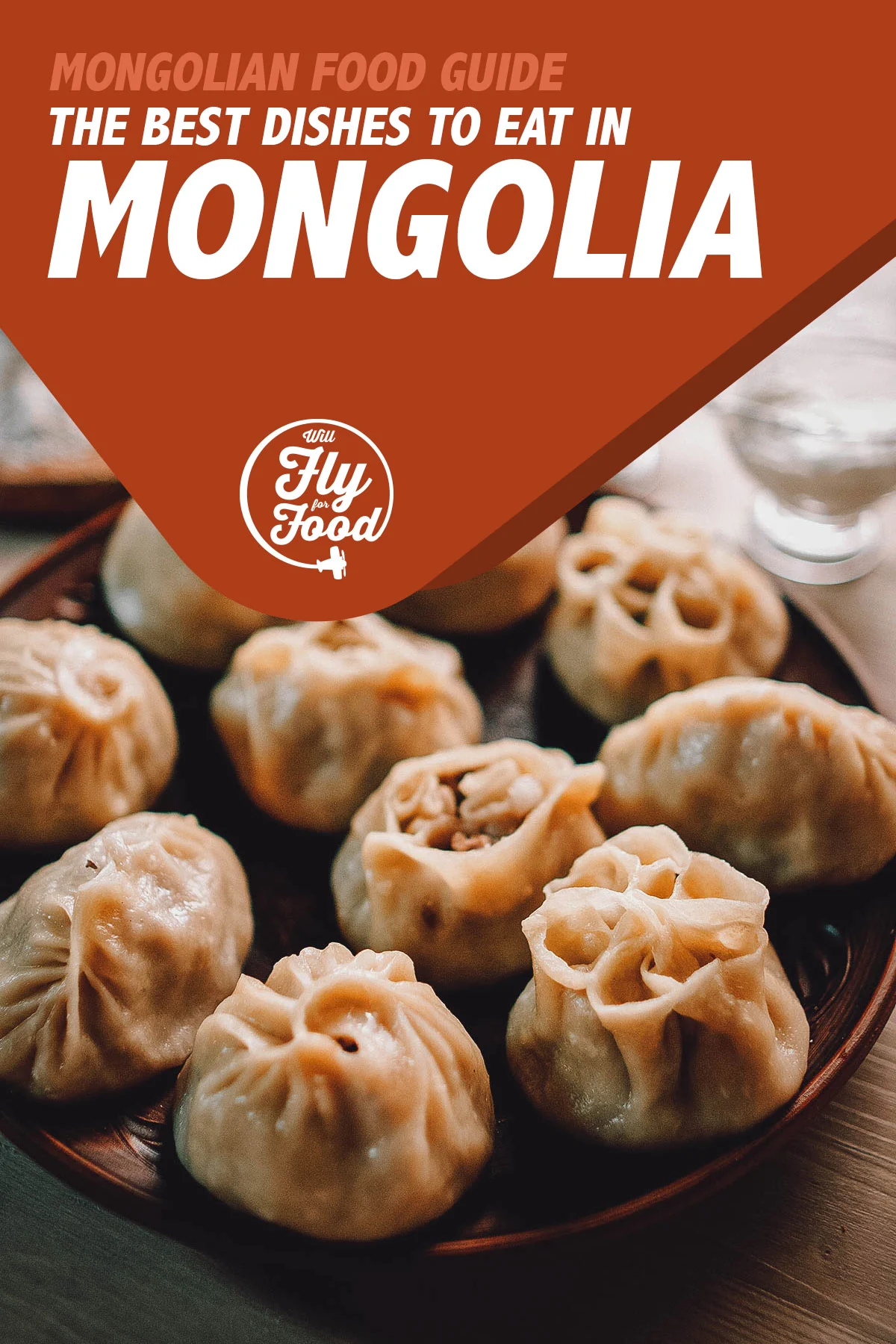
Photo by KatyaZork
WHAT IS TRADITIONAL MONGOLIAN FOOD?
With a land area of roughly 1,564,116 square kilometres (603,909 square miles), Mongolia is one of the largest countries in the world. However, less than 1% of its land is used for agriculture. Mongolia’s high altitude, extreme winters, and low precipitation make most of the country unsuitable for growing crops.
With about 30% of the Mongolian population being nomadic or semi-nomadic, much of the agricultural sector continues to be heavily focused on nomadic animal husbandry. It was never easy for nomads to grow and harvest crops so most of their attention has been focused on rearing livestock.
While crops like corn, potatoes, barley, and wheat are produced in Mongolia, about 75% of the land is dedicated to pasture for the rearing of domestic animals like cows, horses, goats, sheep, and camels. As a result, dairy products, animal fat, and meat figure heavily in Mongolian cuisine. Many Mongolian foods are seasoned lightly and simply, often only with salt.
THE BEST OF MONGOLIAN CUISINE
If you’re a fan of meat-heavy dishes, then you’re going to enjoy Mongolian food. Listed below are ten traditional dishes to try on your next trip to Mongolia.
1. Buuz
There’s no better way to start this list of traditional Mongolian foods than with buuz, a popular meat-filled Mongolian dumpling. It’s a Mongolian national dish that’s typically consumed to celebrate the Lunar New Year (Tsagaan Sar).
In winter, the country comes under the influence of the Siberian High so fatty Mongolian foods like buuz help people get through its harsh winters. Recipes vary from cook to cook but the dumplings are usually made with a basic flour dough filled with a mixture of lamb, tail fat, and other ingredients like onions, victory onions, and caraway.
In Mongolia, you’ll find buuz in many forms. They get their names from how they’re folded and shaped like “flower buuz”, “sheep buzz”, or “lazy buuz”. As their names suggest, flower buuz resembles a flower while lazy buuz is the easiest and quickest to make.
To prepare, the flour dough is cut into pieces roughly the size of your palm. They’re rolled out flat and filled with the meat mixture before being folded and pinched shut. The dumplings are then steamed for about twenty minutes and consumed by hand.
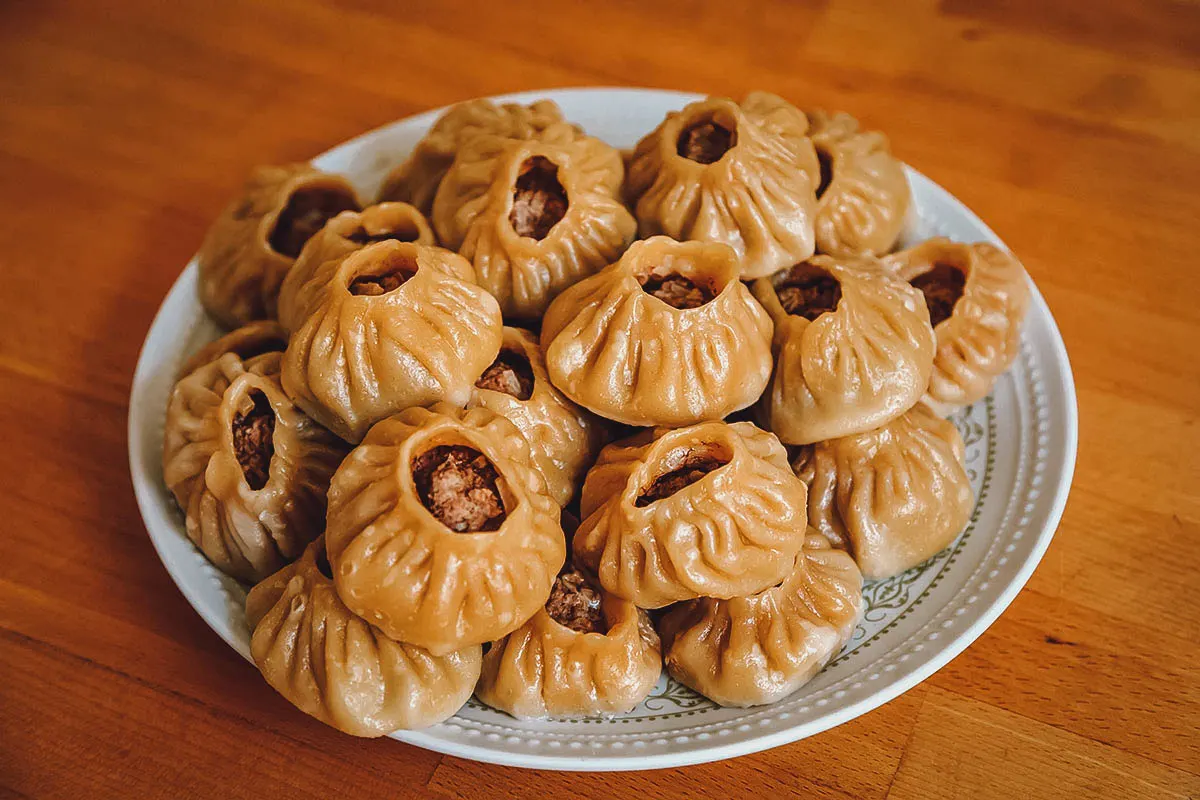
Photo by MarkuzaAnna
2. Bansh
Like buuz, bansh is one of the most popular Mongolian foods. It refers to a smaller type of Mongolian dumpling, about half the size of the average buuz. It can be steamed and eaten on its own or added to Mongolian soups.
One of the most interesting Mongolian dishes made with bansh is banshtai tsai, a type of milk tea with dumplings. Recipes vary but it’s typically made with bansh, water, milk, flour, salt, and tail fat.
To prepare, a sheep’s tail is cut into pieces and then fried. Once it turns a golden brown color, a bit of flour is added to fry in the tail’s fat. Water is then added and brought to a boil.
At this point, you may think that it’s just soup with dumplings but it isn’t! Once the bansh is ready, we add it to the soup along with some salt and milk.
In Mongolia, we have a traditional drink called suutei tsai which is tea with milk. If you add bansh into suutei tsai, then it becomes milk tea with dumplings or banshtai tsai. It’s an interesting dish that you need to try in Mongolia.
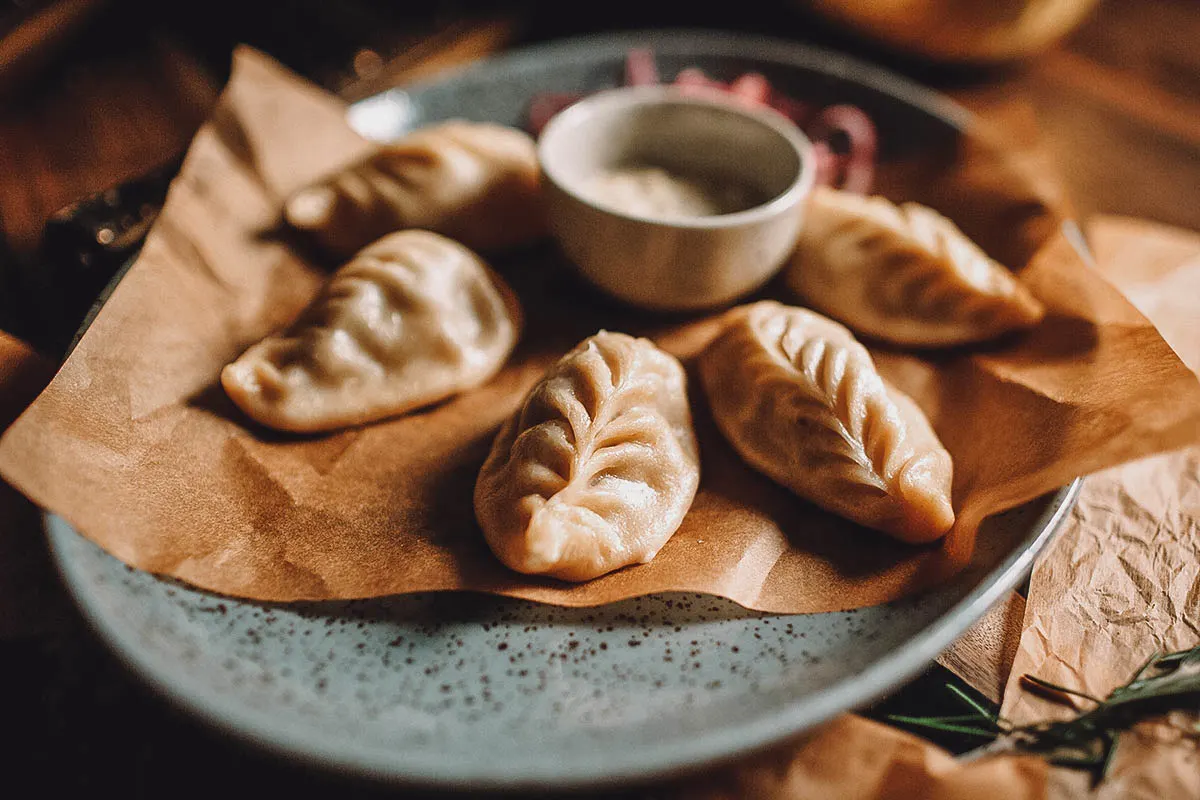
Photo by KatyaZork
3. Khuushuur
You can think of khuushuur as the Mongolian version of chebureki, a Russian fried pastry filled with seasoned ground meat. It’s a Mongolian dish that was directly influenced by Russian cuisine.
The ingredients for khuushuur are very similar to buuz or bansh but it’s much larger, about 4-6 times bigger than the average buuz. It’s usually shaped in an oval or half-moon and is much oilier than the previous two dumplings because it’s deep-fried.
Khuushuur is the main dish served at Naadam, a traditional Mongolian festival that features competitions in three sporting events – wrestling, horse racing, and archery. Unlike homemade versions, the khuushuur served during Naadam are round.

Photo by mors74
4. Tsuivan
As described, meat features prominently in Mongolian cuisine. It can be barbequed, mixed into dumplings, or cooked into soups and other dishes like budaatai khuurga (Mongolian rice bowl). One Mongolian meat dish that you absolutely must try is tsuivan.
Tsuivan is a type of Mongolian noodle dish made with meat and various vegetables. It’s traditionally made with mutton but other types of meat like beef or pork can be used as well.
To prepare, the dough is rolled out into a round flat sheet and poured over with some oil. It’s then cut into quarters and stacked before being sliced into strips about 0.4 cm (0.15 in) wide.
The noodles are placed over the meat and vegetables simmering together in a pot. The pot is covered tightly with a lid to allow the noodles to be steamed by the shallow layer of water boiling in the pot. After about 10-15 minutes, the noodles are cooked and the pot is tossed with the lid still on to thoroughly mix the ingredients.
Tsuivan is one of the most beloved and culturally significant Mongolian foods. Mongolian men love tsuivan so there’s a general saying that a woman’s abilities as a housewife can be determined by how well she makes tsuivan. If she can cook it well, then chances are she’ll make a great housewife.
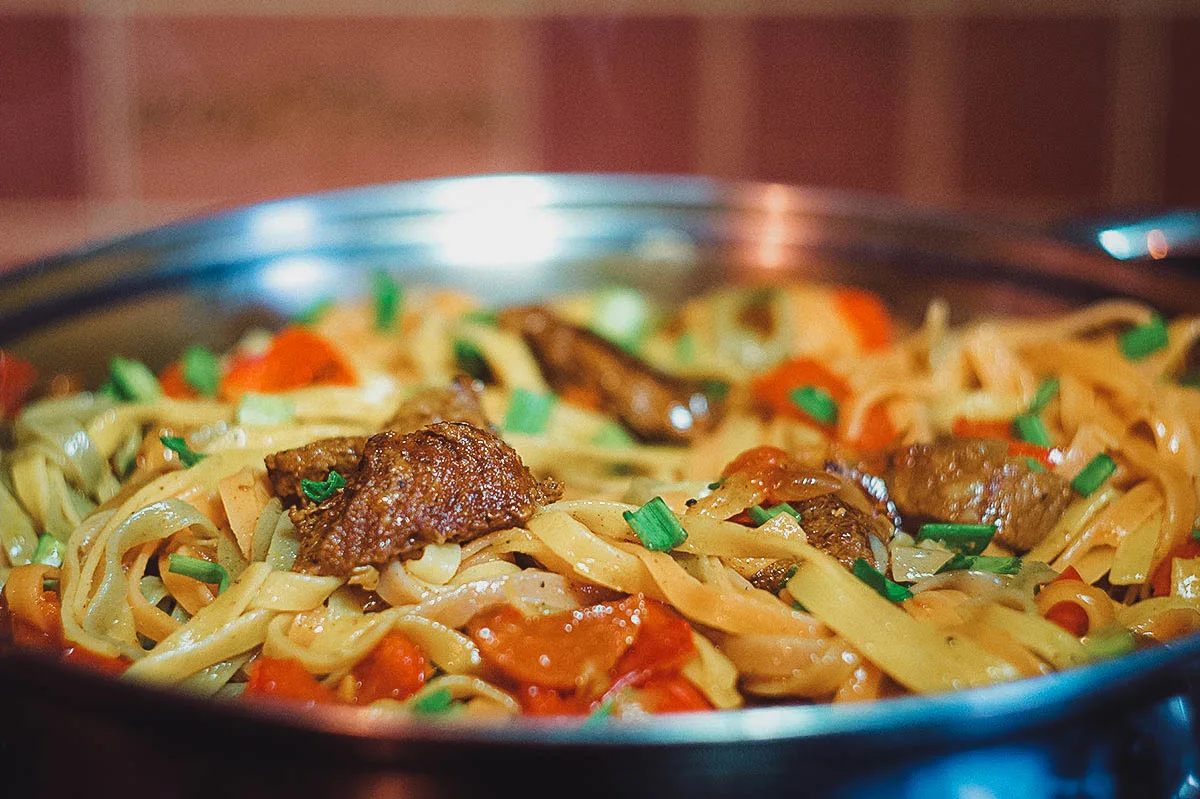
Photo by zemskovphoto
5. Guriltai Shul
No Mongolian food guide can ever be complete without mentioning guriltai shul. It refers to a family of Mongolian noodle soups made with fatty meat like mutton or beef, vegetables, spring onions, root crops, and noodles. The name of this popular Mongolian dish literally means “noodle soup”.
One interesting type you should try in Mongolia is tasalan guriltai shul. It’s a simply seasoned soup made with boiled lamb or beef bones, salt, and short flat noodles cut by hand. In some cases, the flattened sheets of dough are fried first before being cut into strips.
Compared to other countries that typically form their noodles into long strands, Mongolians don’t have a preference to the shape or length of their noodles. As long as it tastes good, then noodles can be short or long, narrow or wide, thick or thin.
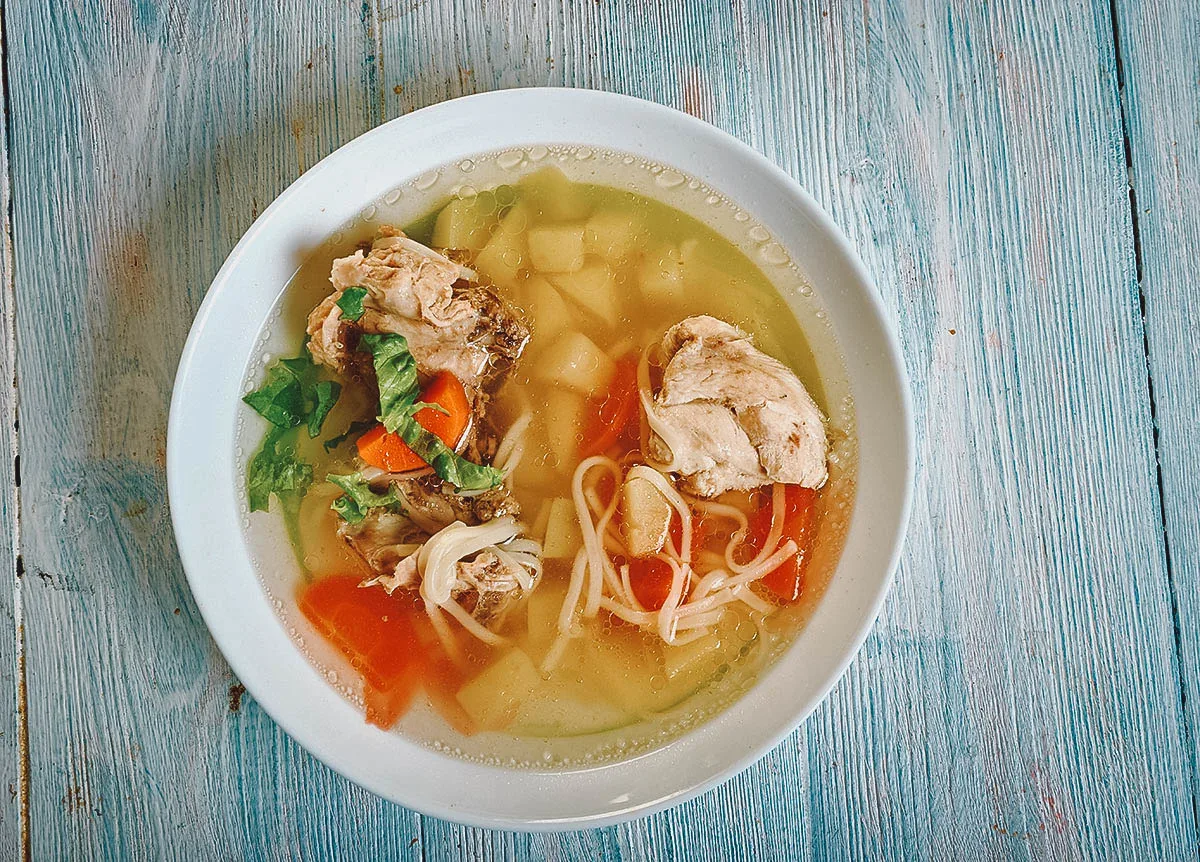
Photo by fanfon
6. Borts
Borts refers to the Mongolian version of jerky. Before cold storage was invented, Mongolians would expose fresh meat to the cold air to dry and preserve it. Lamb and horse meat weren’t as suitable for preservation so borts was typically made with beef, goat, or camel meat.
This method of food preservation was ideal for the nomadic lifestyle because it allowed meat to last for a long time, about 1-3 years. It was also just a fraction of the weight of fresh meat, making it much easier to transport. 1 kg (2.2 lbs) of fresh meat and bone would produce about 214 grams (7.5 oz) of borts.
Borts is an ingredient in many Mongolian recipes. It’s used in soups, dumplings, and many other Mongolian dishes. It was even brought to space as a food source by Mongolia’s first astronaut Jügderdemidiin Gürragchaa.
During the era of Genghis Khan, borts was an invaluable food source that provided sustenance to Mongolian soldiers in times of war.
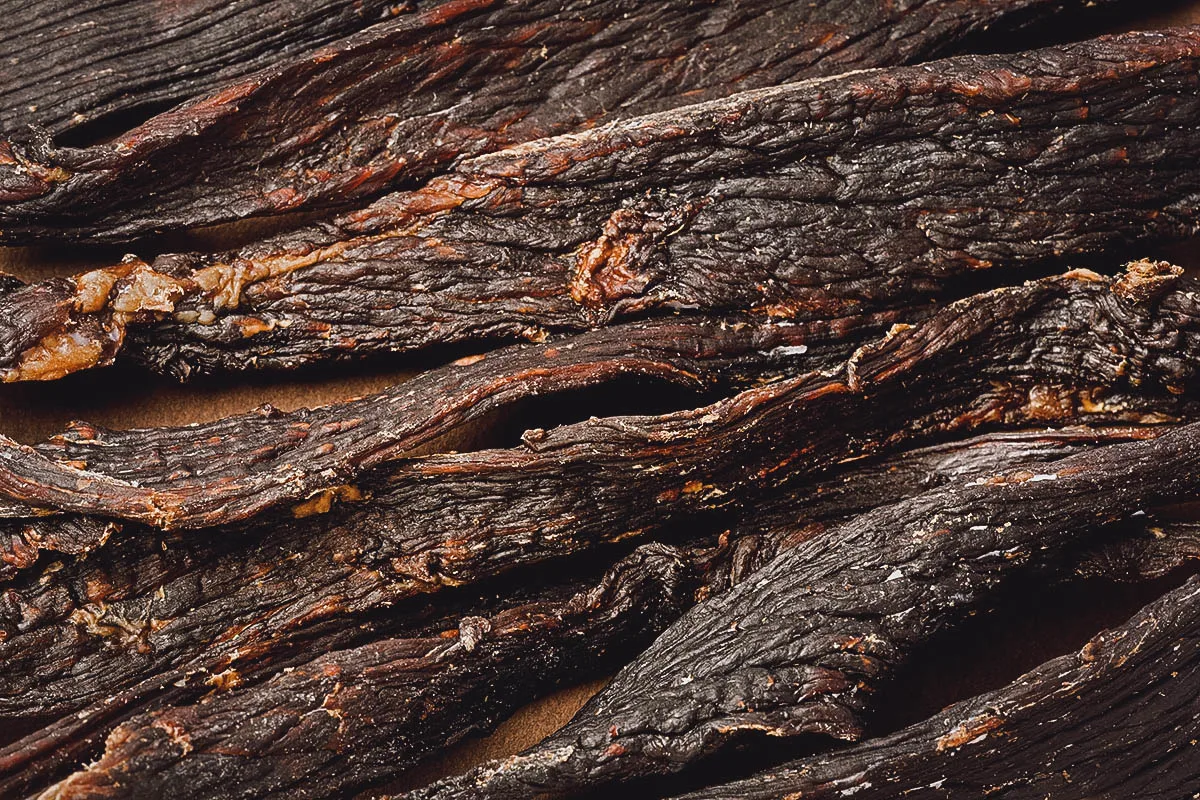
Photo by raptorcaptor
7. Khorkhog
Khorkhog refers to a traditional Mongolian barbeque. It’s typically made with lamb or goat meat, vegetables, and root crops cooked in milk churns using heated stones.
To make khorkhog, the meat and vegetables are placed in a milk churn which is used like a pot. To facilitate the cooking process, river stones are heated in a fire and added to the pot, followed by water which produces steam to cook the vegetables and meat. It’s a method of cooking that was invented by nomadic Mongolian tribes and is still used by families living in the countryside.
When the khorkhog is ready and the stones have cooled down a bit, Mongolians will take the stones and rub them in their hands. They do this because they believe the heated stones have healing effects. If you get the chance to try khorkhog in Mongolia, then you should do the same.

Photo by Saingerel
8. Boodog
Boodog is one of the most interesting dishes in this Mongolian food guide. It refers to a unique method of preparing meat in Mongolia.
Boodog is similar to khorkhog but it doesn’t make use of a milk churn or pot to cook the meat. In fact, it doesn’t use any type of cookware at all. Instead, boodog is made by cooking the meat in the animal’s own skin.
Mongolian nomadic warriors carried what they could on horseback. They couldn’t be weighed down by heavy cookware so they devised a method of cooking meat and vegetables using the animal’s carcass.
Boodog was traditionally made with any type of animal but these days, it’s made only with lamb or goat. The most difficult part was removing the meat, bones, and organs without tearing the skin. The meat is then seasoned and stuffed back in the carcass with vegetables, heated river stones, and water before being sealed shut to cook.
In ancient times, boodog would be roasted over an open fire to scorch the fur, but modern cooks now use blowtorches. Any leftover fur gets scraped away with a knife. When the opening that was sealed shut starts to drip with hot fat, then you’ll know that the boodog is cooked and ready to eat.
Boodog is an ancient dish that’s highly respected in Mongolia. In fact, Mongolians have a saying about boodog that goes something like this: “People who make and eat Boodog together will be best friends for life”.
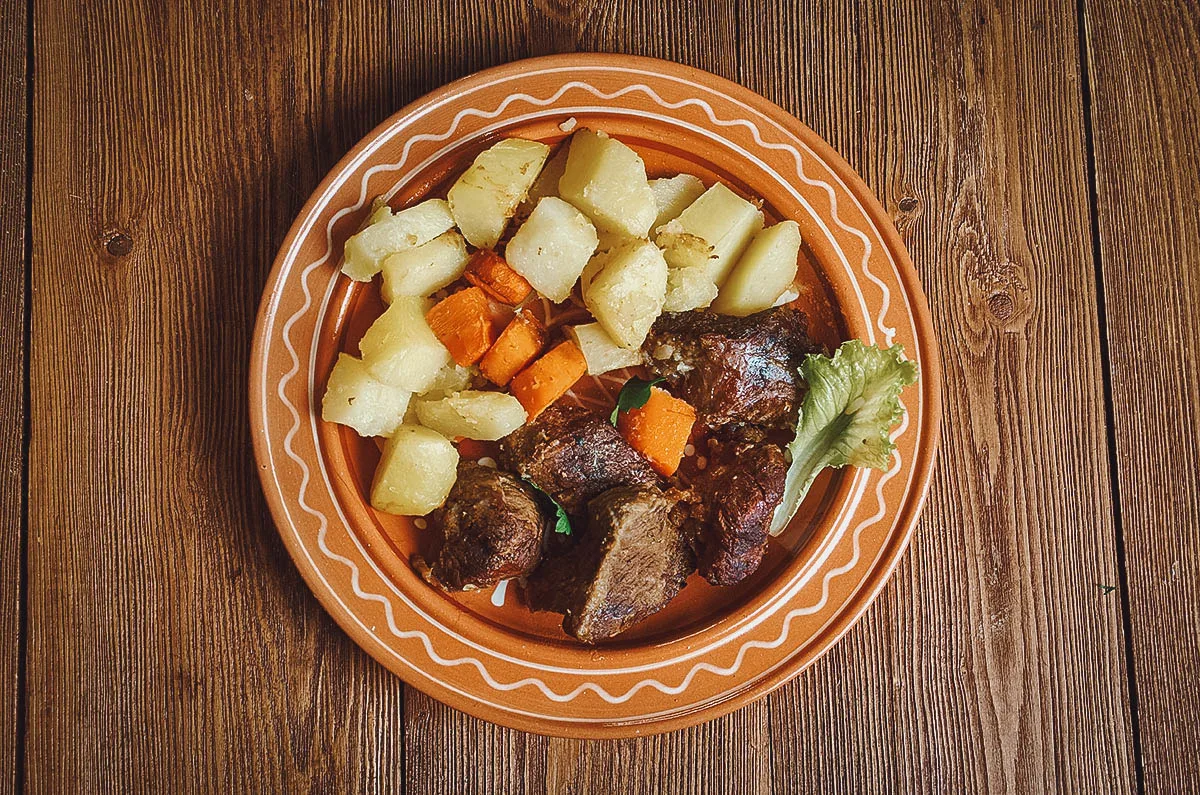
Photo by fanfon
9. Boortsog
Mongolian food may be heavy on meats but there are other dishes you should try as well. Boortsog is one of them. It refers to a type of fried dough snack popular in Mongolia and Central Asian countries like Kazakhstan, Kyrgyzstan, and Uzbekistan. It’s available throughout the country with every province having its own unique spin on the dish.
Recipes for boortsog vary but it’s generally made with a dough consisting of flour, butter, water, salt, and sugar. The dough is cut and formed into various shapes like spheres, rectangles, or strips before being deep-fried to a golden brown. When ready, they can be eaten plain with tea or enjoyed with butter, honey, or cheese.

Photo by alman-n
10. Airag
With all that meat-heavy Mongolian food weighing you down, you’ll need something to aid your digestion. Look no further than airag.
Airag (or ayrag) refers to fermented mare’s milk. It’s the traditional national beverage of Mongolia and equally popular in Central Asian countries where it’s known as kumis.
Airag is made by filtering fresh mare’s milk through a cloth and pouring it into a leather sack called a khukhuur. The milk is repeatedly stirred for 1-2 days with a wooden masher called a buluur until its ready to drink. Slightly sour but pleasant in flavor, it’s often the first drink offered to guests as a show of hospitality.
Airag has an alcoholic content of about 2% and is known to be a rich source of vitamins and minerals.

Photo by photos_adil
FINAL THOUGHTS ON MONGOLIAN FOOD
Mongolians use meat in nearly every dish so you’ll have no trouble enjoying Mongolian food if you like eating meat. As previously described, seasonings are used sparingly in Mongolian cuisine. Meat dishes are often seasoned lightly using just salt to allow the natural flavors of the meat to shine.
Because of the country’s long and cold winters, Mongolians consume a lot of animal fat and dairy products to pack on the calories. In winter, meat is frozen and preserved to last for several months. Their nomadic ways demand that they maintain a simple lifestyle. Belongings and kitchen supplies must be kept to a minimum.
It isn’t a lifestyle for everyone, but visit Mongolia and you’ll find a happy and content people well-connected to their land. If you enjoy nature and simple living, then there’s much to fall in love with in Mongolia, not least of which is Mongolian cuisine.
Cover photo by MarkuzaAnna. Stock images via Depositphotos.

